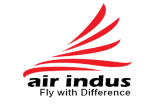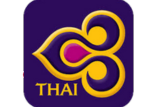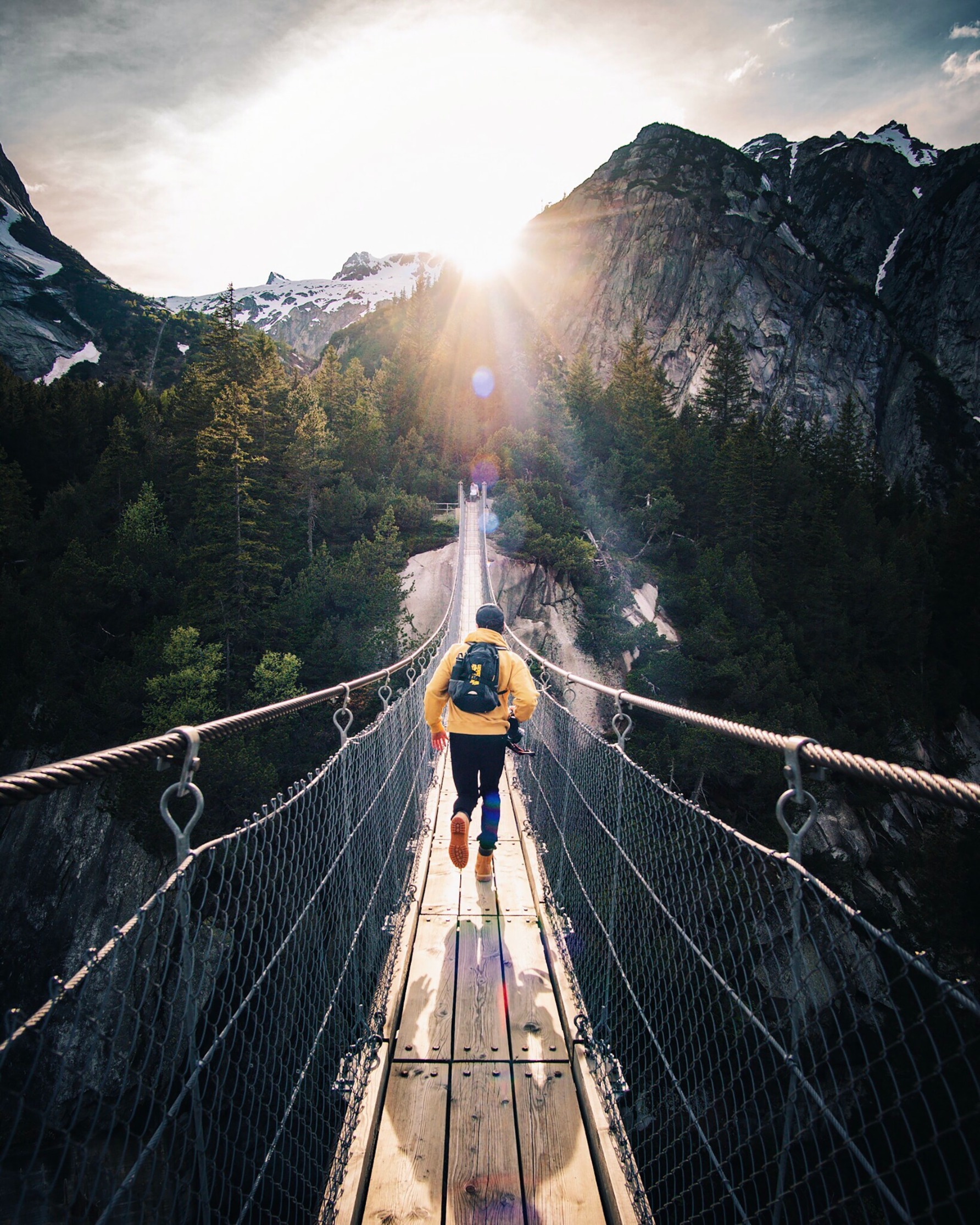US Visa from Bangladesh: Documents, Consultants & Fees
Are you running behind agencies to get your US visa from Bangladesh? Or are you stuck in the middle of the process while trying on your own? Don’t be hopeless. We have come up with a complete guide on securing a US visa from Bangladesh.
From revealing common reasons behind visa refusals to providing step-by-step instructions on completing applications and interviews flawlessly, consider us your trusted companion on this journey.
U.S. Visa Category for Bangladeshi
The U.S. government offers several types of visas for Bangladeshi citizens. However, all the visa programs are classified under two major categories, these are:
- Non-immigrant visa
- Immigrant Visa
Before we describe each visa category, check the table below that shows a quick overview of the eligibility for each visa type:
| Visa Type | Eligibility |
|---|---|
| Business/Tourist Visa (B1/B2) | Individuals with-Necessary proof of “short duration” travel.Sufficient funds to cover expenses during travelSatisfactory proof of returning home Country after travel. |
| Work Visa | Have a job offer in the USA bachelor’s or higher degree holder in specialty sectorSeasonal agricultural workerDepartment of Labor certification holderTrainee for up to two yearsAthletes, entertainers, artists |
| Student visa | Admission into a SEVP accepted institutionEnrollment as a full-time studentEfficient in EnglishFinancially stable individuals |
| Exchange Visitor Visa | Individuals involved in consultations, observation, research, training, or demonstration of special skillsStrong recognition in the specific fieldSelected by the United States Department of Sta |
| Transit/Ship Crew Visa | Individuals only passing through the United StatesCrew members serving on board aircraft or a sea vessel or in the United StatesIndividuals permitted to enter another country after departing US |
| Religious Worker Visa | Persons authorized by a recognized religious entityHaving at least 2 years of membershipThe religious entity must be a bona fide nonprofit religious organization in the United States. |
| Domestic Employee Visa | Going to work as a domestic employee for at least six monthsPersons with evidence of compelling social and economic ties abroad Individuals with at least one year experience as a personal or domestic servant. |
| Journalist and Media Visa | Recognized representatives of the foreign mediaThe home office must be in a foreign country. Visiting for news gathering process, reporting on actual current events. |
| Family-Based Immigration Visa | Relatives of a U.S. citizen, such as married children, siblings, or cousins. Spouse and unmarried children under the age of 21 of legal permanent residents (Green Card holders) |
| Fiancé(e) Visa | The sponsor fiancé must be a U.S. citizen.Each partner must be unmarried. |
| Employment-Based Immigration | Skilled workers whose jobs require a minimum of 2 years of training or work experience Professions whose jobs require at least a baccalaureate degree from a U.S. university or college. |
| Returning Residence Visa | Individuals having unbroken ties to the United StatesPersons who left the United States unintentionally and it was beyond their control. |
1. Non-immigrant visa (NIV) for Bangladeshi
Individuals visiting the United States for tourism, business, education, or specialized work can apply for a non-immigrant visa to fulfill their specific goals within a designated time frame. Check the common non-immigrant US visas for Bangladeshi below:
Business/Tourist Visa (B1/B2)
The visitor visa (B-1/B-2) is offered to individuals who plan to visit the United States temporarily (6 months per entry) for either business (B-1) or leisure and medical purposes (B-2).
Typically, the B-1 visa is intended for travelers engaging in consultations with business partners, attending conferences or conventions related to science, education, profession, or business, as well as dealing with estate matters or contract negotiations.
On the other hand, the B-2 visa is designed for those embarking on recreational trips such as tourism, visiting loved ones or friends, seeking medical treatment, and participating in fraternal, social, or service-oriented activities.
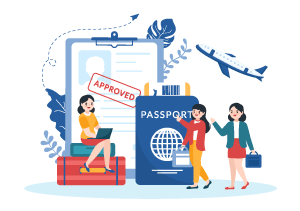

Work Visa
If your intention is to work in the United States on a temporary basis (3 months to 10 years) as a non-immigrant, you’ll need a work visa. It is essential to obtain an appropriate visa based on the nature of your employment, as mandated by U.S. immigration law.
To apply for a work visa, it is generally required that your prospective employer or agent submit a petition to the USCIS for approval prior to initiating the application process.
Student Visa
The United States extends a warm invitation to foreign citizens seeking educational opportunities in the country. For Bangladeshi, the US offers two distinct types of student visas depending on whether it’s academic or vocational study.
To apply for a student visa, all applicants must secure acceptance from a recognized school or program. Once accepted, the educational institution will furnish the essential approval documents required for the student visa application.


Exchange Visitor Visa
The exchange visitor visas are granted to individuals who plan to engage in an authorized program (for up to 12 months) with the aim of teaching, studying, conducting research, receiving training, or pursuing graduate medical education.
This type of visa program facilitates the exchange of individuals, knowledge, and expertise in the domains of education, arts, and sciences.
Transit/Ship Crew Visa
To transit through the United States and reach a foreign destination, citizens of Bangladesh must possess a valid transit visa (C).
Crew members serving on sea vessels or aircraft in the United States are required to have a crew visa (D).
Generally, crew members of aircraft or ships transiting (for up to 5 years) through the United States or its waters use a combination transit crew visa (C-1 D), but there are instances where only the D visa is necessary.


Religious Worker Visa
The religious worker visa (R) visa is specifically intended for individuals who want to enter the United States on a temporary basis (up to 12 months) for religious work.
This encompasses individuals who have been granted permission by an officially recognized religious entity to perform duties commonly associated with clergy members of that particular religion, as well as individuals engaged in various religious occupations or vocations.
Domestic Employee Visa
The B-1 visa category specifically caters to domestic workers who have been working for their employers for a minimum of 6 months and wish to join them temporarily (up to 5 years) in the US.
This visa is applicable to individuals whose employers, confirmed by their personnel office, are US citizens subjected to regular international transfers lasting two years or more.


Journalist and Media Visa
The media (I) visa is designed for Bangladeshi media representatives who temporarily (for up to 12 months) visit the United States to practice their profession while their home office remains in Bangladesh.
Applicants must meet specific requirements outlined in U.S. immigration law to be eligible for this visa category. Proper qualifications are necessary to obtain the media (I) visa.
2. Immigrant Visas for Bangladeshi
The United States grants an immigrant visa to Bangladeshi citizens who have the intention of establishing permanent residence and employment in the country.
In order to apply, individuals must be sponsored by either a relative or an employer who files the necessary paperwork with USCIS.
Family-Based Immigration Visa
This visa category allows US citizens and green card holders to sponsor certain relatives for immigration to the country.
Under the regulations of U.S. immigration law, namely the Immigration and Nationality Act (INA), there are two separate sets of immigrant visa categories available for families: immediate relatives and family preference.
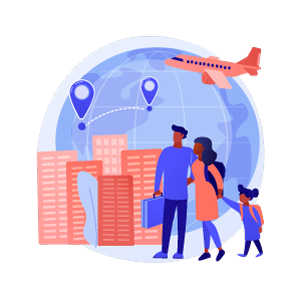

Fiancé(e) Visa
The US Fiancé(e) Immigrant Visa, also known as the K-1 visa, is a unique immigration option that allows US citizens to bring their foreign fiancé(e)s to the United States for marriage and eventual permanent residency.
This visa offers a pathway for couples who are engaged but not yet legally married.
Employment-Based Immigration
The Employment-Based Immigration visa is a type of visa that allows foreign nationals to enter the United States for employment purposes.
This visa category is designed to meet the needs of U.S. businesses by allowing them to hire skilled workers from other countries.
There are several categories within the Employment-Based Immigration visa, each with its own specific criteria and requirements.

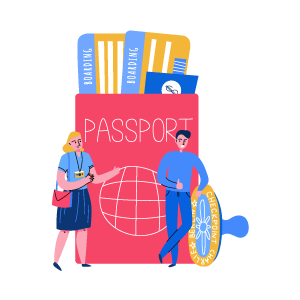
Returning Resident Visa
The Returning Resident visa, also known as the SB-1 visa, is designed for individuals who are lawful permanent residents (Green Card holders) of the United States but have stayed outside the country for a prolonged period and lost their permanent resident status.
This visa allows them to return and restore their residency in the US. However, obtaining this visa is not an automatic process and requires meeting specific criteria.
How to apply for a US visa from Bangladesh
As we mentioned earlier, all the US visa programs are classified under two major categories, namely the Non-immigrant visa and Immigrant visa.
The application process for a US visa varies depending on which visa category you’re applying for. So, we’ll discuss the application process for each category separately.
US Non-immigrant (NIV) Visa Application Process from Bangladesh
To apply for a non-immigrant US visa from Bangladesh, follow the steps mentioned below:
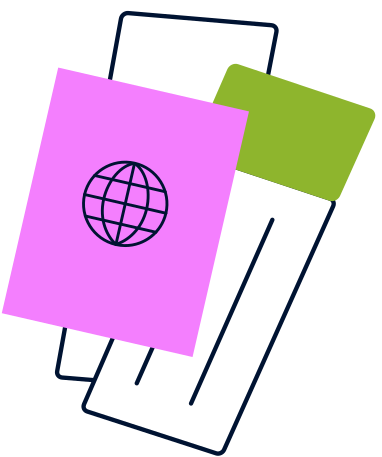
Step 1: Determine Visa Type
Before you head to apply for the visa application, determine which type of visa you’re applying for. This step might seem unuseful at first glance. However, it’s even the most important preliminary work so far.
We have already discussed different types of US non-immigrant visas. As you can see the required documents vary depending on the type of visa.
So, read the visa types section from above and also visit the official website for detailed information.
Step 2: Complete the DS-160 Form
Non-immigrant visa applicants have to fill up an application form. The DS-160 Form is specified for non-immigrant visa applicants.
Fill out the form very carefully according to the official guidelines. Check the form thoroughly to find whether any wrong or missing information is there.
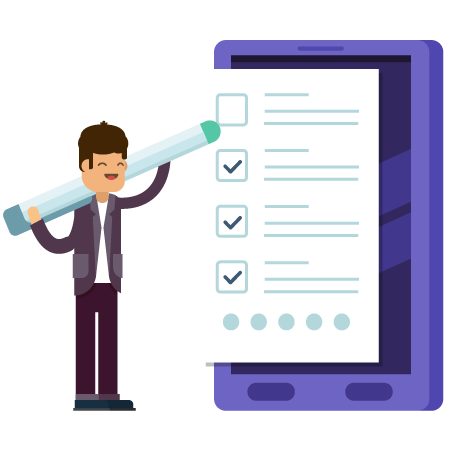
Step 4: Schedule Appointment
Now you have to schedule your visa interview appointment from your profile. To access your profile, please use the same login credentials that you used to pay your visa fee.
Once logged in, you will be directed to your dashboard. On the left-hand side menu, click on Schedule Appointment to initiate the appointment scheduling process. The necessary documents for this process include:
- Your passport number,
- receipt number from your Visa Fee receipt,
- and the ten (10) digit barcode number from your DS-160 confirmation page.
Throughout the process, you will have the opportunity to select your visa type, provide personal information, add dependents if applicable, choose a document delivery location, confirm visa payment, and schedule your appointment.


Step 5: Attend the Interview
Go to the embassy to attend the visa interview on the scheduled date and time. Please make sure you carry all the documents shown on the Schedule My Appointment page.
Step 6: Collect Your Visa
If the consular officer and visa processing unit approve your visa application, you can collect your visa. The visa will be delivered to the pickup location you have set in your profile.

US Immigrant Visa Application Process from Bangladesh
Bangladeshi citizens who are willing to get a US immigrant visa can apply for their respective (except for K/ Fiancé(e)) visas through the following steps:
Step 1: Submit A Petition (Petitioner)
The first step in the US immigrant visa application process is submitting a petition. Read carefully, this petition must be submitted by your relatives who are residing in the United States as US citizens and lawful permanent residents.
Petitioners must fill up the I-130 Form, Petition for Alien Relative with the United States Citizenship and Immigration Services (USCIS) service fee.
Step 2: Wait for the Case Preparation by NVC (Both applicant and petitioner)
If USCIS approves your petition after evaluation, it will be sent to the National Visa Center (NVC). This is the core visa processing unit.
Here, your visa case will go through preliminary processing. The time of visa case processing at NVC varies depending on specific immigrant visa categories.
Once done, you or the petitioner will receive a Welcome Letter in email or physical mail from the NVC.
Step 3: Pay Fees (Both applicant and petitioner)
As you receive the welcome letter, there are two different payments the applicant and petitioner have to make. These are:
- Immigrant Visa Application Processing Fee – The standard visa application fee
Affidavit of Support Fee – This fee has to be paid by the petitioner through the Form I-864. Signing this form means the petitioner will take responsibility for financial support.
Step 4: Submit Financial Documents (Petitioner)
This step is for petitioners. After paying the visa processing fee and affidavit of support form fee, petitioners must submit documents as evidence of their financial capability.
Step 5: Complete Online Visa Application (Applicant)
Once the financial documents of the petitioner are submitted and your visa application status is marked as “PAID”, you have to complete the Application for Immigrant Visa and Alien Registration form.
Step 6: Submit Necessary Civil Documents (Applicant)Step 6: Submit Necessary Civil Documents (Applicant)
After completing the Application for Immigrant Visa and Alien Registration form, you have to submit a scanned copy of your civil documents.
The necessary documents can vary based on your visa type. Here is a list of necessary civil documents:
- Birth certificates
- Marriage certificates
- Petitioner documents
- Military Records
- Court and prison records
- Document of adoption
- Police certificates
- Photocopy of the biographic data page of your passport (must be valid).
Step 7: Complete a Medical Examination
US immigrant visa applicants must complete a medical examination at least two weeks before attending the visa interview.
That means you should perform a complete medical exam after document submission as early as possible.
Step 8: Attend Visa Interview
After receiving all the required documents for the immigrant visa application process, the National Visa Center will send a letter to either you or the petitioner.
This letter will contain information about the interview schedule and instructions for the pre-interview procedures.
Once the interview is done, all case documents will be forwarded by the NVC to the Consular Section in the U.S. Embassy in Dhaka. On the day of the interview, you should bring the following documents:
- Appointment Letter
- Passport
- Photographs
- DS-260 Confirmation Page
- Supporting Documents
Step 8: Visa Approval and Collection
Once your visa application is accepted, you can collect your passport from the designated DHL office around 10 days after your interview.
VISA Process Timeline
The total time needed to get a US visa can vary depending on the type of visa, individual circumstances, and processing times.

Total time from making payment to BDV: 30.5 – 38.5 months
*Timing fluctuates and changes, since this is a government processing. Each individual will have a unique process.
Fees and Charges for Getting US Visa From Bangladesh
We have already discussed all the steps regarding a successful US visa issuance from Bangladesh. However, if you fail to pay the visa fees and other charges initially, you won’t be able to schedule an interview.
Unfortunately, many Bangladeshi citizens willing for a US visa remain hesitant about visa fees and other charges. Even sometimes, frauds take a chance and grab a massive amount of money.
To assist you in this aspect, we have compiled all the necessary information regarding US visa fees and charges from Bangladesh. Let’s start with a sneak peek of the payment charts for specific visa programs:
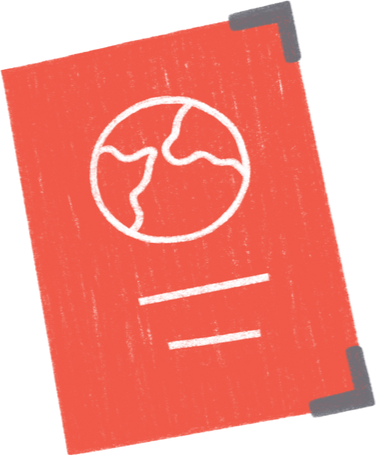
Fees and Charges for Non-immigrant US Visa
The following table shows visa fees for non-immigrant us visas from Bangladesh:
| Visa Type/Category | Fee Amount in USD | Fee Amount in BDT |
| Business/Tourist | $185 | 20720.00 |
| Ship/Airline Crew | $185 | 20720.00 |
| Temporary/Seasonal Workers and Employment, Trainees | $205 | 22960.00 |
| Treaty Trader/Investor, Australian Professional Specialty | $315 | 35280.00 |
| Student (academic/ vocational) | $185 | 20720.00 |
| Exchange Visitor | $185 | 20720.00 |
| Persons with Extraordinary Ability | $205 | 22960.00 |
| Intracompany Transferees | $205 | 22960.00 |
| International Cultural Exchange | $205 | 22960.00 |
| Religious Worker | $205 | 22960.00 |
| NAFTA Professionals | $185 | 20720.00 |
| Athletes. Artists & Entertainers | $205 | 22960.00 |
| Fiancé(e) or Spouse of U.S. Citizen | $265 | 29680.00 |
Note: Based on the Dollar rate the BDT amount will fluctuate.
Other Non-immigrant Visa Fees
Depending on the visa type and country of citizenship, applicants need to pay additional fees such as Reciprocity fees, SEVIS fees, etc. However, as a Bangladeshi citizen, you don’t need to pay Reciprocity fees. But you must pay a SEVIS fee of $350 when applying for the Student (academic/type F and vocational/ type J) and $220 for the Exchange visitor (type J) visa.
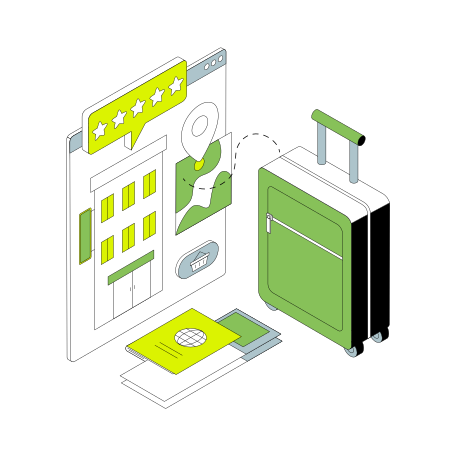
Fees and Charges for US Immigrant Visa
US immigrant visa fees are tiered in a complex way since the visa processing continues both in Bangladesh and the US. The following table shows fees for different immigrant visas and other associated charges.
| Payment section | Fee Amount in USD | Fee Amount in BDT |
| Immediate relative and family preference visa application fee | $325 | 35540.34 |
| Employment-based visa application fee | $345 | 37727.44 |
| Approved I-360 self-petition fee | $205 | 22417.75 |
| Special immigrant visa application fee | $205 | 22417.75 |
| Returning resident (SB-1) visa application fee | $205 | 22417.75 |
| Diversity visa application fee | $205 | 22417.75 |
| Orphan (intercountry adoption) immediate relative petition fee | $775 | 84750.05 |
| Immigrant petition for relative (I-130) fee | $535.00 | 58504.87 |
| Affidavit of Support Review fee (only when reviewed domestically) | $120 | 13122.59 |
| Application for Determining Returning Resident Status fee, Form DS-117 | $180 | 19683.88 |
| DHS Biometrics Fee | $85 | 9295.17 |
**Note: Paying an additional fee known as “USCIS Immigrant Fee” is compulsory for all immigrant visa applicants. This fee varies depending on visa type and has to be paid before arrival. We recommend checking the updated USCIS immigrant fee amount.
What are the US Visa Statuses?
After applying for a US visa, you have to wait for a certain period before the final confirmation. In the meantime, your application will go through several stages.
Completion of each stage is signified by specific statuses. You can easily check your visa status from the CEAC site.
Below, we have provided brief details of each status so that you can understand how far your visa application has gone:
Application Receipt Pending
This status means your submitted application is pending to enter the visa processing system. However, there are three different scenarios when you may see this status.
First, maybe you haven’t appeared in the interview. Second, your submitted application isn’t received (mail-in process). Third, your application is submitted successfully but has not been included in the visa processing system.
Application Received
It signifies that your application is successfully received, and you can proceed to further steps, including an interview, fingerprint, and other required document submissions.
However, if you notice this status even after participating in the interview, recheck the status within the next two working days.
Administrative Processing
As the name suggests, this status indicates the administration associated with US visa issuance is processing your visa case.
You’ll notice this status throughout the duration (generally several weeks) your visa case takes to be processed. However, it also means your visa is approved but waiting for the final printout.
Issued
It means you’re ready to receive your visa as it’s in final processing or has already been issued.
Refused
The status “refused” is shown when the respective consular officer rejects your visa application. It can happen for various reasons. Check the upcoming sections to learn about US visa refusals. Note: For immigrant visa applicants, there will be slight changes in the visa case status as the application process is also different. In this case, you’ll notice visa status, such as “Transfer in progress,” “Return to NVC,” and “Expiring soon.”
What questions do they ask at the US embassy?
The interview is one of the most critical parts of the visa application evaluation process. If you fail to interpret the consular officer and can’t answer his questions correctly, your visa application will be rejected.
It happens even after submitting all the documents and performing the previous steps accurately. So, it’s wise to have a good grasp on what questions you’ll be asked.
However, the pattern of questions in a visa interview varies depending on the type of visa you applied for. With this in mind, we’ve formulated a list of some basic topics the consular officer asks about in the US embassy:
- Your biographic information, marital status, interests, family, etc.
- The purpose of your visa application
- The reason behind choosing America as the destination or the particular American university (for student visa)
- Educational and financial background
- Will you come back to Bangladesh after you complete the travel purpose or study program?
- Plan after graduation. Whether you’ll work there (for a student visa)
- Questions about your preferred company, skill, work experience, and your future plan (for H-1B visa)
- Justifying information about the sponsor (for student visa) or finance provider (for any visa)
- Questions about the relatives residing in the US (spouse or immigrant visa)

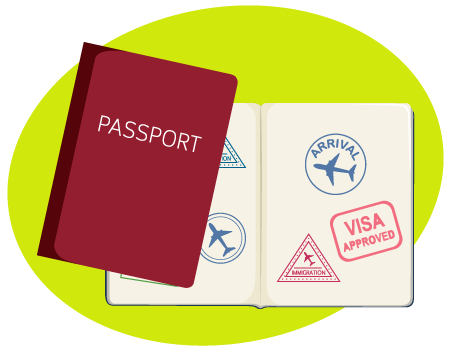
Common Reasons for US Visa Rejection From Bangladesh
Generally, the consular officer justifies the eligibility of visa candidates from Bangladesh under the US Immigration and Nationality Act (INA).
Violating any section of this act can lead all your efforts and desires to go in vain. So, before you get set for the US visa application from Bangladesh, be mindful of the following facts that can be the reason behind US visa rejection.
- The visa application isn’t fulfilled, and all the necessary documents are not submitted properly. [INA section 221(g)]
- Failing to interpret and provide a credible explanation to the consular officer that they’ll stay in the US only for the specified duration according to their distinct visas. [INA section 214(b)]
- Condemnation for criminal activities expressing moral turpitude [212(a)(2)(A)(i)(I)]
- Conviction in drug violation [212(a)(2)(A)(i)(I)]
- Involvement in criminal activities that condemned the individual for at least 5 years or more. [INA section 212(a)(2)(B)]
- Lack of attestation or testimonial for particular documents and sections. [INA section 212(a)(4)]
- Involved in fraudulent activities to get the visa. [INA section 212(a)(6)(C)(i)]
Previously violated the rules regarding the duration of residence in the US. [INA section 212(a)(9)(B)(i)]
Appeal Process for USA Visa Rejection From Bangladesh
Frankly speaking, there is no appeal process for US visa refusals from Bangladesh. But don’t be hopeless, visa refusals under the Immigration and Nationality Act (INA), section 214 (b) doesn’t mean you’re permanently ineligible.
This indicates that you can apply again for the visa just as you did before. From paying fees to document submission, everything will be as usual.
The only exception is, if your visa is refused under section 221 (g), it means your visa is refused due to a lack of necessary documents.
In that case, you won’t need to reapply. You have to contact the embassy as soon as possible and submit those missing documents.
However, in terms of a visa refusal under section 214 (b), you must present strong evidence or supportive documents that defend the reasons behind your visa denial. In addition, you must make changes in the circumstances that caused your visa refusal previously.

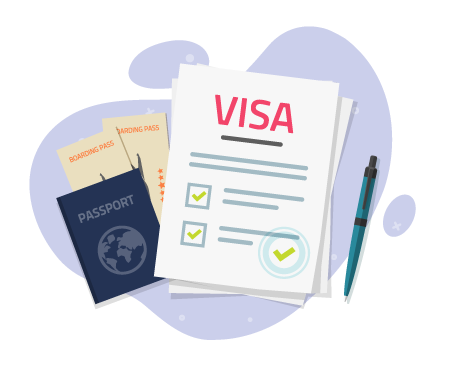
Tips for Obtaining a US Visa from Bangladesh
The US visa application process isn’t just about documentation, it’s about information, presenting yourself as a capable person for getting the visa, and earning the trust of the consular officer.
To avoid visa rejection and get your visa successfully, follow the tips mentioned below:
- Apply early, you should keep some time on hand for the processing.
- Prepare yourself for the interview, don’t just rush and stand in front of the consular officer.
- Make sure your purpose of the travel or visa application is well-defined.
- Fill up the application form carefully, and don’t submit an application with wrong or missing information.
- Avoid collecting a bunch of documents, focus on the documents that are obvious to be presented.
- In terms of NIV, you should provide every single piece of information that clarifies you’ll return to Bangladesh after visa expiration.
- For immigrant visas, clarify to the consular that you’ll be sponsored by your relatives with US citizenship as long as it’s needed.
What is the new US visa policy in Bangladesh?
The foreign policy of the US government changes with time. Depending on the situation, the US State Department announced a new visa policy for Bangladeshi citizens on May 24, 2023.
This visa policy has become a talk of the town among political parties, government officials, and mass media.
According to the new US visa policy for Bangladesh, the United States has the authority to limit the granting of visas to individuals from Bangladesh who are suspected of interfering with or supporting efforts against the democratic election process in their country.
This applies to both present and past Bangladeshi officials, as well as members of political parties aligned with the government or opposition, and those belonging to law enforcement, judiciary, and security services.
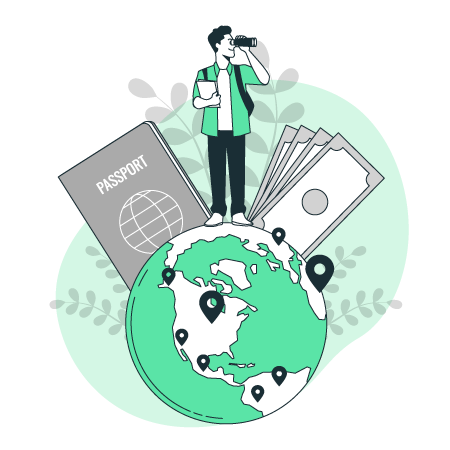
Frequently Asked Questions
Are you curious about learning something more about US visa from Bangladesh? If so, check the following FAQ section.
It’s time to sign out, before this, the last words to share with you. As you can see, obtaining a US visa from Bangladesh is a bit of a complex process.
But believe us, with the right information and guidance, it is achievable.
All you need is to understand the different types of visas available, prepare the necessary documents, and follow the application procedures diligently, to increase the chances of success.



